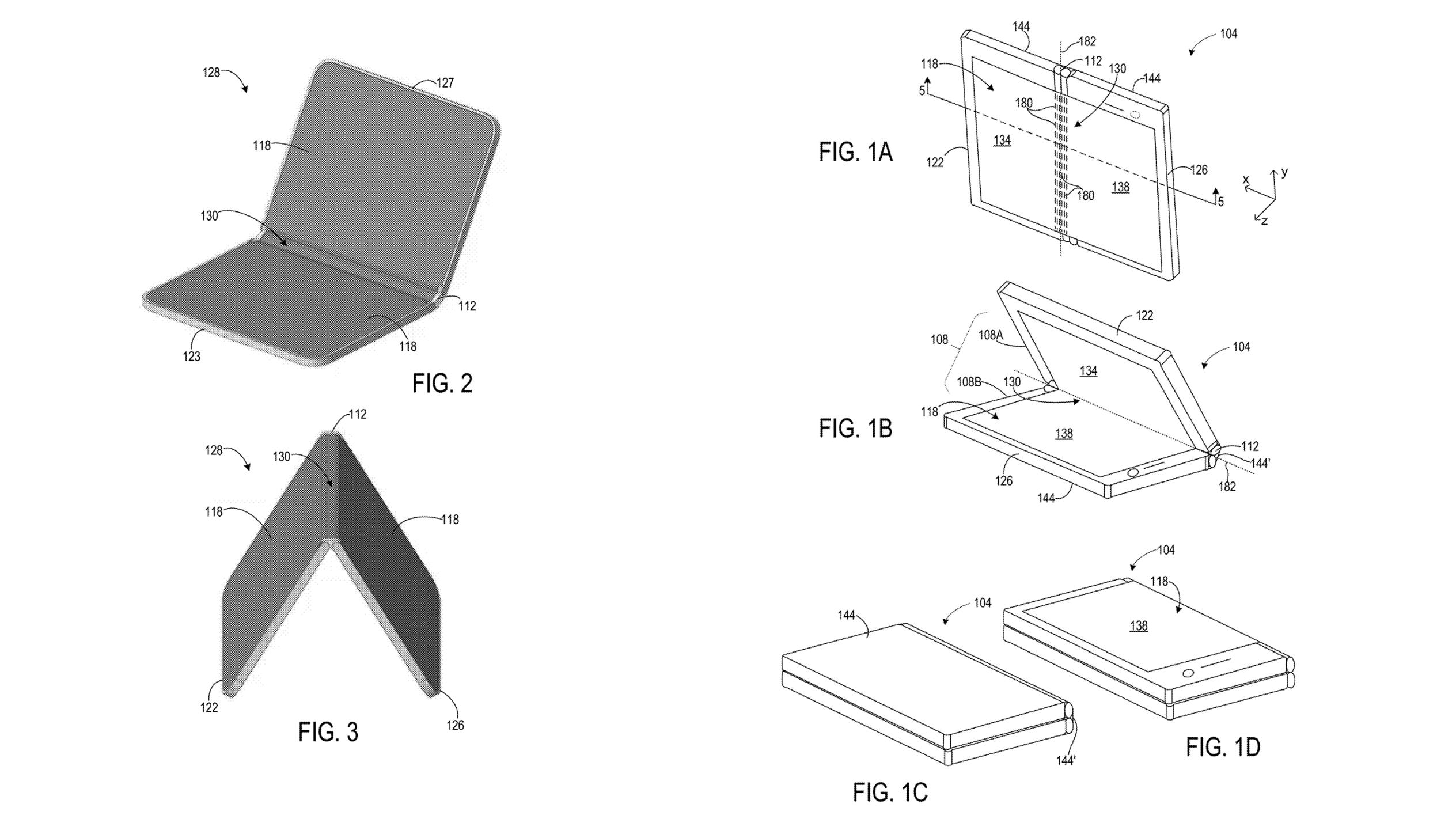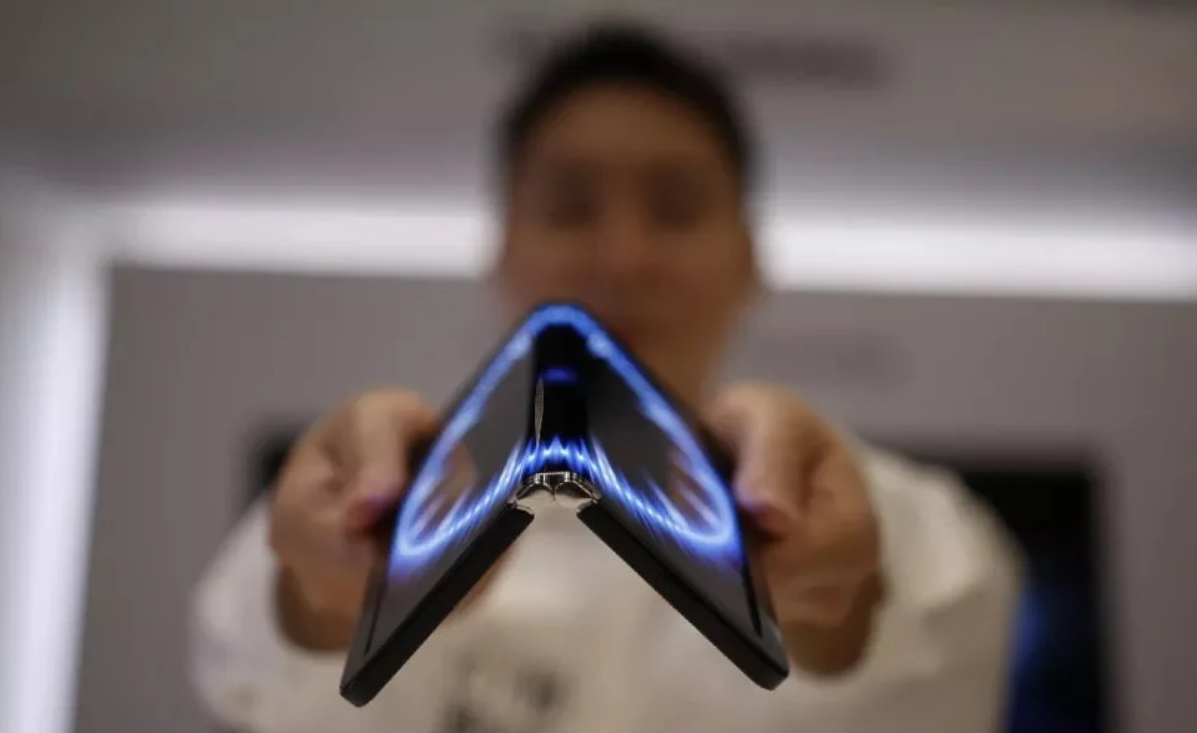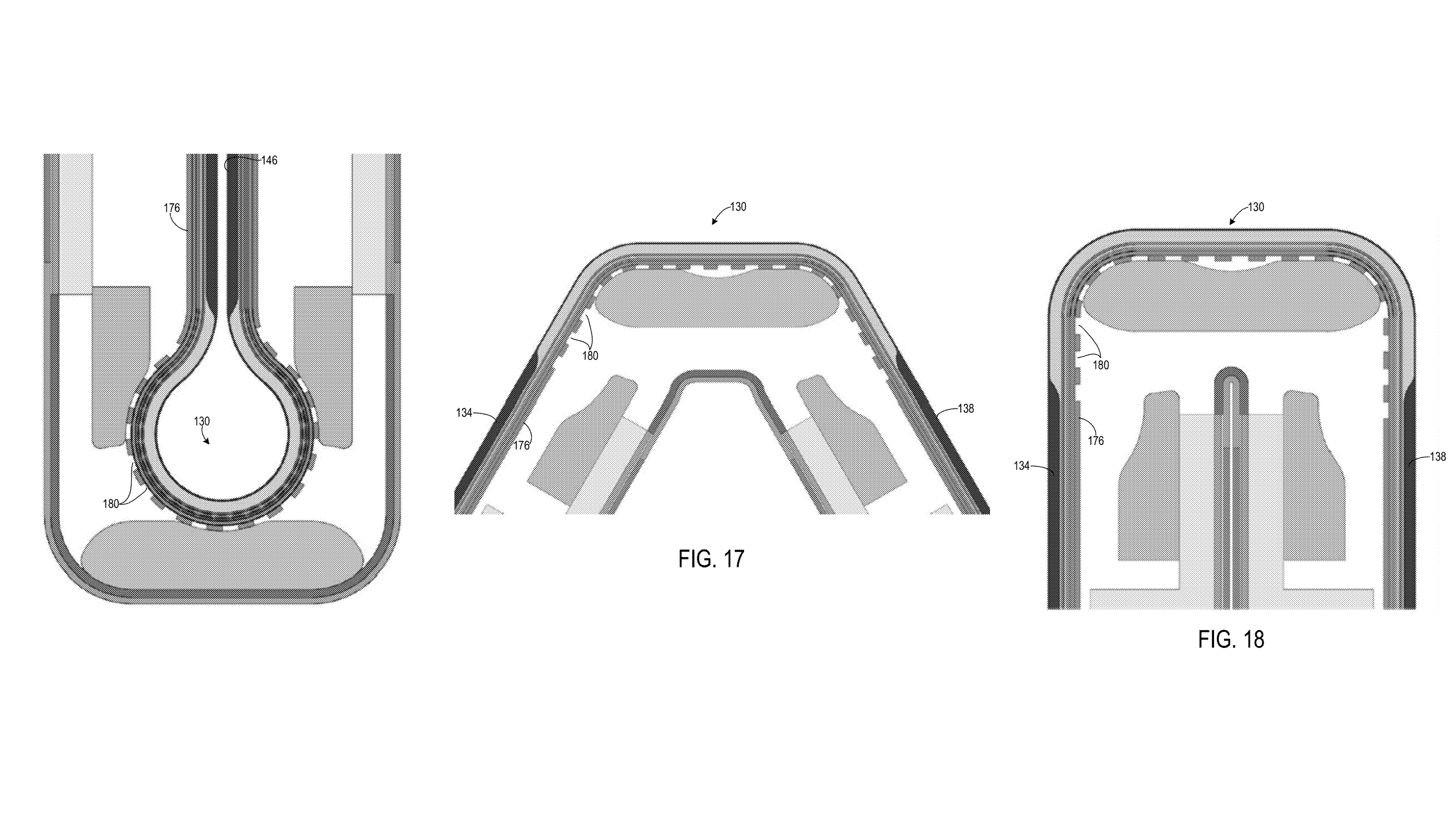Microsoft applies for patent on device with reverse foldable display right as LG invents one
The next Surface Duo may be the best of everything: A foldable display that can still reverse fold for one-handed mode.

In the Matrix Reloaded (2003), the ever-so-positive Morpheus said, “I do not see coincidence, I see providence. I see purpose.” The same may be said regarding Microsoft and the future of its foldable phone, the Surface Duo, and some new information all coming to light this week.
A new patent application by Microsoft, spotted by “Walking Cat,” demonstrates a unique way to make a foldable display happen without creating an angled gap and how to reverse-fold it 360-degrees for a single-display mode.
Such a design would solve many perceived issues with Microsoft’s Surface Duo, which relies on two displays instead of one. While Surface Duo can reverse fold into many different postures, including a single-screen mode, the gap created by the two displays can be frustrating for those who would prefer one large, single-screen experience, especially when watching a video.
While Surface Duo multitasks like no other phone advances coming with Google’s Android 12L are likely to act as software fixes to mimic the dual-screen experience without OEMs having to “hack it” themselves, much like Samsung.
In the 37-page patent application (US 2022/0158124), Microsoft outlines what the patent application is for, noting, “Examples are disclosed relating to foldable display devices and methods for folding a display device through a range of degrees at a folding portion.” Those degrees range from 0 to 360 (Figures 16, 17, and 18). It’s also clear from the submitted drawings that the intention is for the device to fold in every direction without any gap when fully closed.
Of course, most of the application is about how the device folds (“methods”), the hinge, gears, and overall design. The only thing needed is a glass display that can do what Microsoft wants, which is where things get really interesting …
LG invents a foldable display that can fold from 0 to 360 degrees
Just this week, as reported by Gizmo China, LG showed off some of its new display technology at SID 2022 Display Week. One of those innovations was a new 8.03-inch foldable OLED display that can fold inwards and outwards at any angle from 0 to 360 degrees.
All the latest news, reviews, and guides for Windows and Xbox diehards.
That certainly sounds like the same technology Microsoft would need for its patent application.

LG’s display uses UTG (Ultra-Thin Glass) and even has an anti-fingerprint material to make the device look cleaner. The resolution is 2480 x 2200 with 413 PPI, offers 430 nits of brightness (but peaks at 600), and delivers 109.9% DCI-P3 color gamut.
By contrast, Surface Duo 2 has an 8.3-inch 1892 x 2688 (401 PPI) OLED display, which isn’t all that dissimilar to what LG demonstrated.
LG notes that the display is rated for 200,000 folds.
Rumors of Surface Duo design change ...
Our sources say Microsoft does not plan to release a Surface Duo 3 this year. Instead, it will focus on software, including delivering Android 12L in the coming months to the original Surface Duo and current Surface Duo 2.
There have been some hints that Microsoft may also be reconsidering the dual-screen approach to Surface Duo and may try to do a version with a foldable display. With today’s technology, such a device can only fold in one direction, negating any advantage Surface Duo may have over other foldable devices.
But between this new patent application and LG’s news, such a device could be a possibility. However, it’s too early to know if a Surface Duo 3 with such a design could launch by fall 2023. We may see Microsoft experiment more as these innovations can be mass-produced at an affordable cost.
Either way, foldable phones will get a lot more exciting, and Microsoft clearly has many more ideas.

Daniel Rubino is the Editor-in-chief of Windows Central. He is also the head reviewer, podcast co-host, and analyst. He has been covering Microsoft since 2007 when this site was called WMExperts (and later Windows Phone Central). His interests include Windows, laptops, next-gen computing, and wearable tech. He has reviewed laptops for over 10 years and is particularly fond of 2-in-1 convertibles, Arm64 processors, new form factors, and thin-and-light PCs. Before all this tech stuff, he worked on a Ph.D. in linguistics, performed polysomnographs in NYC, and was a motion-picture operator for 17 years.

